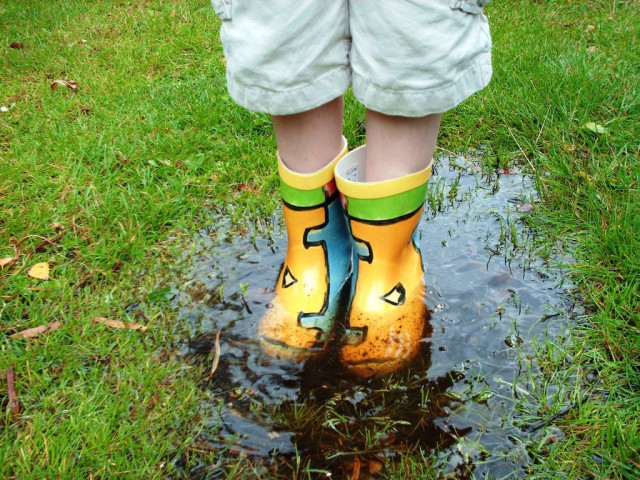Driving in rain - slippery when wet
Try to drive around puddles and not through them … you never know if they are hiding a massive hole or ditch.

So here are some tips we’ve culled from our own experience, the mishaps of others and, of course, the internet to make your rain driving a little safer. A lot of this may seem like common sense, but let’s face it, there’s nothing common about sense!
1. First of all, GO SLOW!!! Getting there a few minutes late is better than not getting there at all.
2. Make sure your tyres are properly inflated and balanced. Unbalanced tyres have a greater chance of slipping on wet roads during the rains.
3. Brakes become wet and less responsive in the rainy season, which means you should be more cautious. Keep a distance between your vehicle and other vehicles so you have enough time to slow down as braking suddenly can cause your vehicle to skid. Also try to brake in advance so the person behind you can see your brake lights and get enough response time.
4. Use your signal lights. Never switch lanes or turn without using your signal light so that the driver behind you can adjust in time. Unless you enjoy getting rear-ended, that is.
5. Rain or high humidity can quickly cause windows to mist up inside the car, reducing visibility. If your car has an AC, turn up the heat and direct the airflow to your defrosters with the AC switch on. If you don’t have an AC, you’ll have to crack open a window to get the air moving. If that doesn't work, or if it’s raining so hard that you can’t see, then stop the car on the side of the road and wait.
6. Try to drive around puddles and not through them … you never know if they are hiding a massive hole or ditch. If you have to, then try and drive in the tracks of the car ahead of you. Of course, if said car falls into a ditch, you may want to change tracks.
7. Don't follow large trucks or buses too closely. The spray created by their large tires reduces your vision. Take care when passing them as well; if you must pass, do so quickly and safely. This goes quadruple if you’re riding a bike.
8. If you don’t have a choice but to enter a flooded area, then first stop the car and check the water level ahead. If the water is deeper than the bottom of your doors or the bottom third of your wheels, it’s not a good idea to drive through it.
9. Of course, chances are you’ll HAVE to drive through it, so here’s how to do that: proceed slowly and avoid making large waves in the water. If you have a manual transmission, engage first gear and keep the engine running fast by releasing the clutch just enough to partially engage the gear and give more acceleration than usual. This keeps the exhaust gases moving, helping to prevent water from entering your tailpipe. If that happens, your engine will stall and water might enter your engine through your air intake, causing a condition known engine hydro-lock, forcing you to replace it.
10. If you determine it's safe to go on, proceed slowly. In vehicles with automatic transmissions, you should place the car in first gear and feather your brake, slowing the vehicle while at the same time keeping your revs up. Doing this for longer than a few seconds can seriously damage your vehicle and is not recommended.
Published in The Express Tribune, Sunday Magazine, August 21st, 2011.



















COMMENTS
Comments are moderated and generally will be posted if they are on-topic and not abusive.
For more information, please see our Comments FAQ